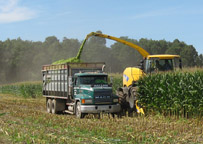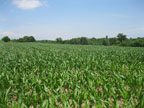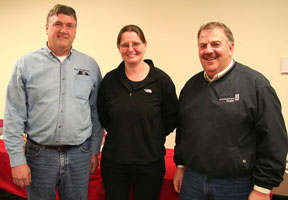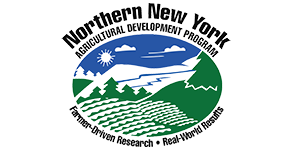
Northern N.Y.: September 25, 2018. Data from the 2018 corn harvest on Northern New York farms will contribute to yield-based zone management for corn growers and evaluation of yield potentials for New York soil types statewide.
Zone-based management and yield mapping present the opportunity to better allocate resources to save on expense, time, and labor, and to reduce environmental loss of nutrients not taken up by the crop or soil.
Dr. Quirine M. Ketterings, Director of the Nutrient Management Spear Program at Cornell University, Ithaca, N.Y., leads crop production enhancement research funded by the farmer-driven Northern New York Agricultural Development Program. Using data from four farms in NNY and eight other farms statewide, Ketterings and her team of collaborators are evaluating nitrogen management for farm-specific, field-specific yield stability zones.

“Farmer participation is essential to identifying yield limitations and developing strategies that make best use of resources like manure and fertilizer. Our goal is to find ways to improve yield and nutrient use and reduce the risk of nutrient loss to the environment at the same time,”Ketterings said.
A minimum of three years of data from yield monitors on harvesting equipment is needed since stability zones are farm-specific and field-specific and are based on farm average and variability over a period of three or more years. Yield data from all fields in the same year are used to determine farm yield averages and variability in yield over the three-or-more-year timeframe.
Yield stability zone mapping is evaluated to identify in which zones farm resources can be best allocated for the biggest return on investment. Zone-based allocation applies to the use of manure and fertilizer, seed density, crop variety, and other factors.

“With yield data of three or more years for a field, a map can be created with four zones. This mapping allows us to evaluate where to invest limited resources,” said Ketterings.
She notes the current focus of the zone mapping is on nitrogen management, but this zone-management approach can be expanded to other nutrients, manure application method and tillage decisions, variety selection, population densities, foliar applications, and other production considerations.
“The goal is to identify when and where we could expect a yield response, and to identify what we can do to elevate yields in the areas not yielding as much or very variable in yield over time,” Ketterings added.
Ketterings’ work on the use of yield monitor data included the development of a protocol for obtaining and cleaning corn harvest data collected by the yield monitor systems that are increasingly used on regional farms. The data cleaning process is as important as field calibration of the yield monitors.
 This regional research funded by the Northern New York Agricultural Development Program is part of a statewide effort.
This regional research funded by the Northern New York Agricultural Development Program is part of a statewide effort.
Funding for the Northern New York Agricultural Development Program is supported by the New York State Senate and administered by the New York State Department of Agriculture and Markets.